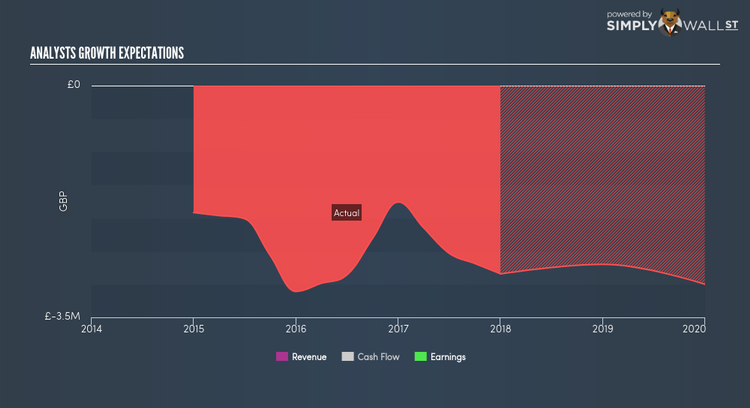When Should You Buy Savannah Resources Plc (LON:SAV)?

Savannah Resources Plc (AIM:SAV), a metals and mining company based in United Kingdom, saw significant share price volatility over the past couple of months on the AIM, rising to the highs of £0.06 and falling to the lows of £0.05. This high level of volatility gives investors the opportunity to enter into the stock, and potentially buy at an artificially low price. A question to answer is whether Savannah Resources’s current trading price of £0.05 reflective of the actual value of the small-cap? Or is it currently undervalued, providing us with the opportunity to buy? Let’s take a look at Savannah Resources’s outlook and value based on the most recent financial data to see if there are any catalysts for a price change. See our latest analysis for Savannah Resources
What is Savannah Resources worth?
The stock seems fairly valued at the moment according to my relative valuation model. In this instance, I’ve used the price-to-book (PB) ratio given that there is not enough information to reliably forecast the stock’s cash flows, and its earnings doesn’t seem to reflect its true value. I find that Savannah Resources’s ratio of 2.52x is trading slightly above its industry peers’ ratio of 1.53x, which means if you buy Savannah Resources today, you’d be paying a relatively reasonable price for it. And if you believe that Savannah Resources should be trading at this level in the long run, there’s only an insignificant downside when the price falls to its real value. Although, there may be an opportunity to buy in the future. This is because Savannah Resources’s beta (a measure of share price volatility) is high, meaning its price movements will be exaggerated relative to the rest of the market. If the market is bearish, the company’s shares will likely fall by more than the rest of the market, providing a prime buying opportunity.
What kind of growth will Savannah Resources generate?
Future outlook is an important aspect when you’re looking at buying a stock, especially if you are an investor looking for growth in your portfolio. Although value investors would argue that it’s the intrinsic value relative to the price that matter the most, a more compelling investment thesis would be high growth potential at a cheap price. However, with a negative profit growth of -5.55% expected over the next couple of years, near-term growth certainly doesn’t appear to be a driver for a buy decision for Savannah Resources. This certainty tips the risk-return scale towards higher risk.
What this means for you:
Are you a shareholder? SAV seems fairly priced right now, but given the uncertainty from negative returns in the future, this could be the right time to reduce the risk in your portfolio. Is your current exposure to the stock optimal for your total portfolio? And is the opportunity cost of holding a negative-outlook stock too high? Before you make a decision on SAV, take a look at whether its fundamentals have changed.
Are you a potential investor? If you’ve been keeping an eye on SAV for a while, now may not be the most advantageous time to buy, given it is trading around its fair value. The stock appears to be trading at fair value, which means there’s less benefit from mispricing. Furthermore, the negative growth outlook increases the risk of holding the stock. However, there are also other important factors we haven’t considered today, which can help gel your views on SAV should the price fluctuate below its true value.
Price is just the tip of the iceberg. Dig deeper into what truly matters – the fundamentals – before you make a decision on Savannah Resources. You can find everything you need to know about Savannah Resources in the latest infographic research report. If you are no longer interested in Savannah Resources, you can use our free platform to see my list of over 50 other stocks with a high growth potential.
To help readers see pass the short term volatility of the financial market, we aim to bring you a long-term focused research analysis purely driven by fundamental data. Note that our analysis does not factor in the latest price sensitive company announcements.
The author is an independent contributor and at the time of publication had no position in the stocks mentioned.

